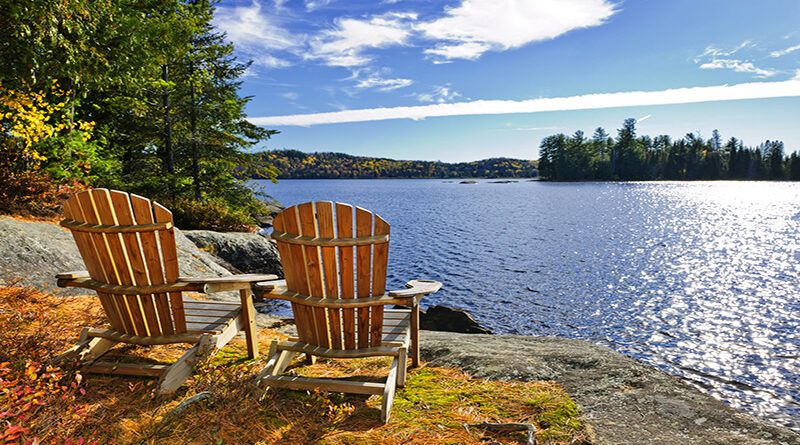Where the Water Meets the Land: The Importance of Shorelines
Maintaining a functional shoreline promotes the health of aquatic and terrestrial ecosystems. Shorelines help to filter pollutants, protect against erosion, and provide habitat for fish and other forms of wildlife. That’s why it’s critical for landowners of waterfront property to manage this important resource.
A shoreline is defined as the border of a lake, pond, river or stream with the land. This waterfront is highly dynamic as it responds to changes in water levels. A well-managed shoreline that incorporates native, non-invasive aquatic and riparian vegetation provides habitat for insects, shellfish, crustaceans, fish, reptiles, amphibians, birds, and mammals, while at the same time offers both aesthetic appeal and recreational opportunities.
In Canada, shorelines are regulated by various forms of legislation, guidelines and policies at the federal, provincial and municipal levels of government. The Canada Fisheries Act protects fish and fish habitat from harmful alteration, destruction, or disruption. If you are located on the Rideau or Trent-Severn Waterway, you are also governed by the Historic Canals Regulations under the Canada Department of Transport Act.
In Ontario, shorelines are regulated under the Lakes and Rivers Improvement Act, Public Lands Act, Planning Act and Conservation Authorities Act. In cottage country, shorelines also receive protection under upper and lower-tier municipal official plans and bylaws, such as the Shoreline Preservation Bylaw administered by the County of Haliburton.
It is vital for all property owners to understand the importance of shoreline protection. A number of excellent resources are available for shoreline management including: A Dock Primer (Fisheries and Oceans Canada); A Shoreline Owner’s Guide to Healthy Waterfronts (Federation of Ontario Cottagers’ Association); Working Along the Shore: A Professional’s Guide to Healthy Shoreline Management for Lake Simcoe (Ontario Ministry of Natural Resources and Dufferin Simcoe Land Stewardship Network); and, The Shore Primer (Cottage Life and Fisheries and Oceans Canada). Many cottagers’ associations can also offer guidance on shoreline management. Several measures are widely recognized for maintaining or restoring shorelines to a natural/semi-natural state including:
- Restricting the use of herbicides/pesticides on adjacent lawns
- Removing hardened shorelines, such as retaining walls and dock cribs
- Creating soft or semi-soft shorelines using bio-engineering design
- Maintaining/restoring a vegetated buffer (Ribbon of Life) between development and the shoreline
- Maintaining/restoring native vegetation along at least 75 % of the shoreline
- Avoiding sensitive terrestrial and aquatic habitat
- Installing pipe or floating docks, which have minimal impact on lake or river beds
Before deciding to develop or improve your property’s shoreline, it is prudent to consult an expert who can determine what permits are required, prepare applications and landscape designs, and implement your shoreline development or improvements in an environmentally sustainable and cost-effective manner.
Ultimately, a well-managed shoreline is one of the easiest ways to ensure both the health of your property and the waterfront. Please send all enquiries to eco@lgl.com or visit www.lgl.com for a complete list of services.
— Article submitted by Grant Kauffman, Senior Planning Ecologist, LGL Limited (gkauffman@lgl.com)





